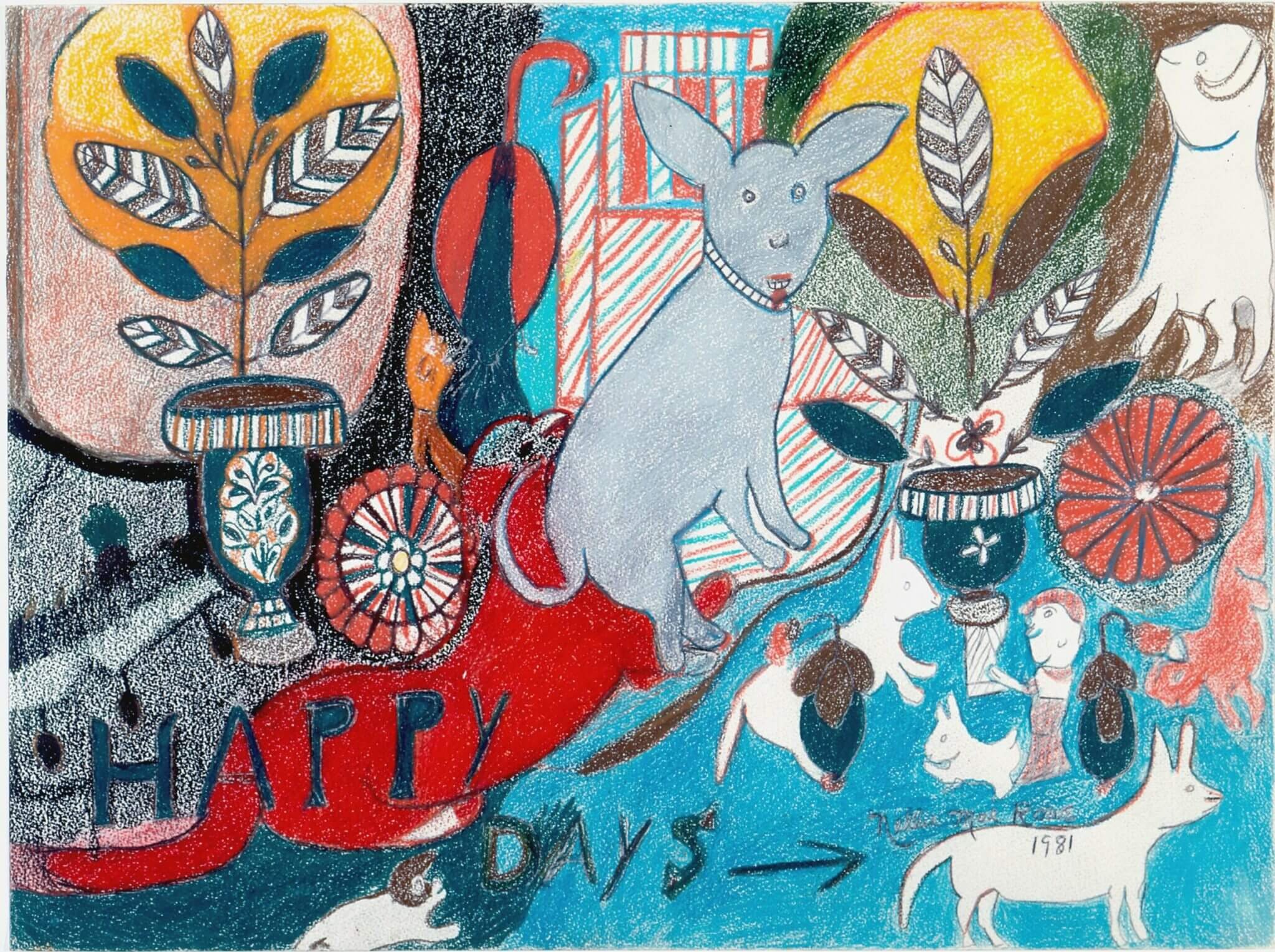Nellie Mae Rowe’s Playhouse
Nellie Mae Row. What It Is. Crayon, colored pencil, pencil on paper.
Imagine stepping into a yard where trees wear faces, where fence posts sprout gum-wrapper flowers, and handwritten signs whisper secrets to the wind. Where a 70-year-old Black woman in rural Georgia—ignored by the art world, dismissed by neighbors—built a kingdom of color so defiant, so alive, it made the soil itself seem to sing.
This was Nellie Mae Rowe’s “Playhouse.” And it was anything but child’s play.
Nellie Mae Rowe.
Born in 1900 to a formerly enslaved father and a quilt-making mother, Rowe didn’t just make art—she weaponized joy. In the teeth of Jim Crow, she transformed her Vinings, Georgia home into a hallucinatory manifesto: chewing-gum dolls stared down passersby, scrap-paper drawings of big-hipped women and two-headed dogs papered the walls, and hand-lettered yard signs dared you to "Look and see what you have been missing!"
The message was clear: This is what survival looks like when it’s allowed to dream.
Most here in the Delta know the name Clementine Hunter. You know her melon-harvesting women, her baptismal whites and midnight blues. But Hunter’s Louisiana and Rowe’s Georgia shared the same brutal arithmetic: Black creativity flourished despite—not because of—the South’s machinery.
Where Hunter documented—painting washdays and funerals like a historian with a brush—Rowe conjured. Her work was incantation: dogs with human eyes, floating cakes, Virgin Marys with afros. If Hunter’s art was a hymn, Rowe’s was a jazz solo—improvisational, unruly, vibrating with holy mischief. Critics called it “folk art.” But it was sabotage disguised as whimsy. Protest dressed in pink heels.
Nellie Mae Row. Happy Days. Crayon, colored pencil, pencil on paper.
In a world that told Black women to shrink, Rowe expanded—filling every inch of her world with color, humor, and sly defiance. When locals called her work “crazy,” she painted herself as a mermaid. When galleries ignored her, she mailed her drawings out herself, tucking in handwritten notes that read: “I am a artist.”
By the time collectors began to pay attention, Rowe was in her seventies. But by then, she’d already built her own museum: a home where Jesus fed pink rabbits, scissors grew wings, and a Black woman’s imagination rewrote the rules.
Then the bulldozers came. In 1982, the Playhouse was destroyed. Forty years later, the major exhibitions finally arrived. The delay says a lot.
Why Rowe Matters
Rowe’s work isn’t just visual—it’s visceral. It echoes the bare-bones truth of oppression and transformation. It doesn’t ask permission. It insists.
Google “Nellie Mae Rowe High Museum” and look at the work. Then ask yourself: Who is the Nellie Mae Rowe of my parish?
They may still be waiting for you to notice.-








